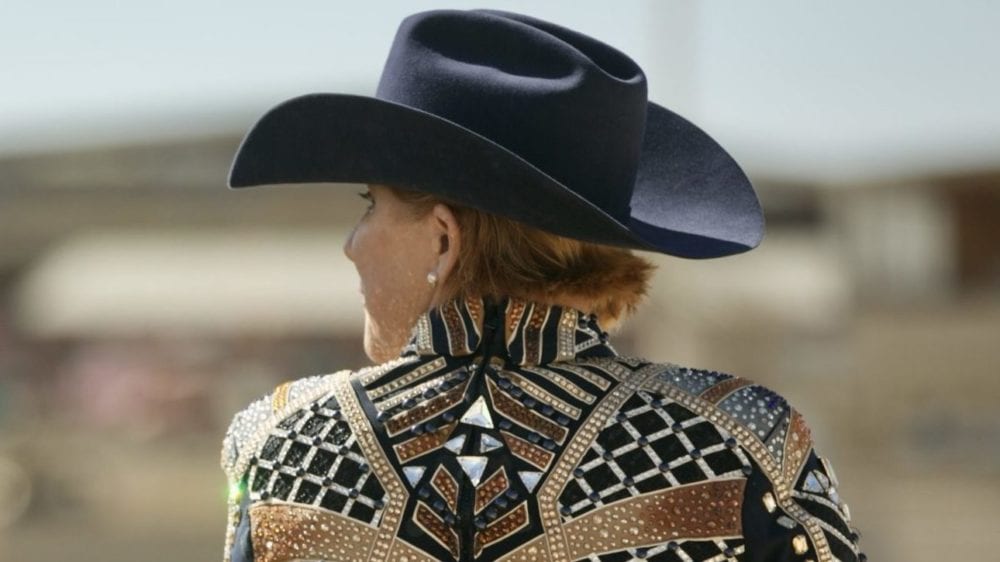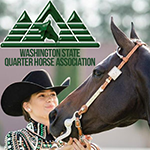The cowboy hat is one of the most iconic Western fashion elements, both in and out of the arena. But how important is the hat to the entire picture of the horse and rider team? We spoke to judge and trainer Sara Simons about the importance of the cowboy hat in creating the right impression with judges.
 According to Simons, the hat is a critical element of the horse and exhibitor silhouette in Western all-around events. “A hat can give a more professional picture if worn properly,” says Sara. “Having a clean, well-shaped hat is key. When I judge, I’ll often see a costly jacket on an exhibitor and a hat that isn’t shaped and in poor condition. It amazes me, because the hat makes or breaks the attire.”
According to Simons, the hat is a critical element of the horse and exhibitor silhouette in Western all-around events. “A hat can give a more professional picture if worn properly,” says Sara. “Having a clean, well-shaped hat is key. When I judge, I’ll often see a costly jacket on an exhibitor and a hat that isn’t shaped and in poor condition. It amazes me, because the hat makes or breaks the attire.”
Simons believes, “[The hat] is probably the most important part of your Western attire. When buying a hat, it should be shaped to fit your face and not necessarily what the trend may be.” She says that a quality, well-fitted, and well-shaped hat will never go out of style. So, where does a rider go to find the perfect hat that will fit their face and have the appropriate shape for showing Western All-Around events at top-level breed shows?
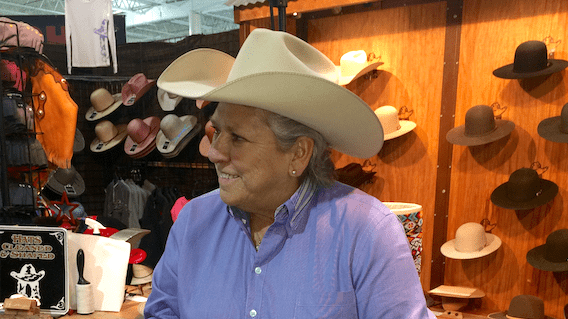 We spoke with Shorty Koger and Jennifer Hettinger of Shorty’s Caboy Hattery, which celebrates its 30th Anniversary this year, getting the inside scoop on hat trends over the years, and how to select the best hat for your budget and face.
We spoke with Shorty Koger and Jennifer Hettinger of Shorty’s Caboy Hattery, which celebrates its 30th Anniversary this year, getting the inside scoop on hat trends over the years, and how to select the best hat for your budget and face.
Thirty years ago, Shorty says the hat trend was a tall crown (at least 6.5 in. tall) with a short brim (right around 4 in. long). These hats were shaped with scoopy edges, like a shovel around the brim. Times have certainly changed since then. Now, breed show exhibitors are looking for a more architectural-shaped hat with clean lines and sharp corners.
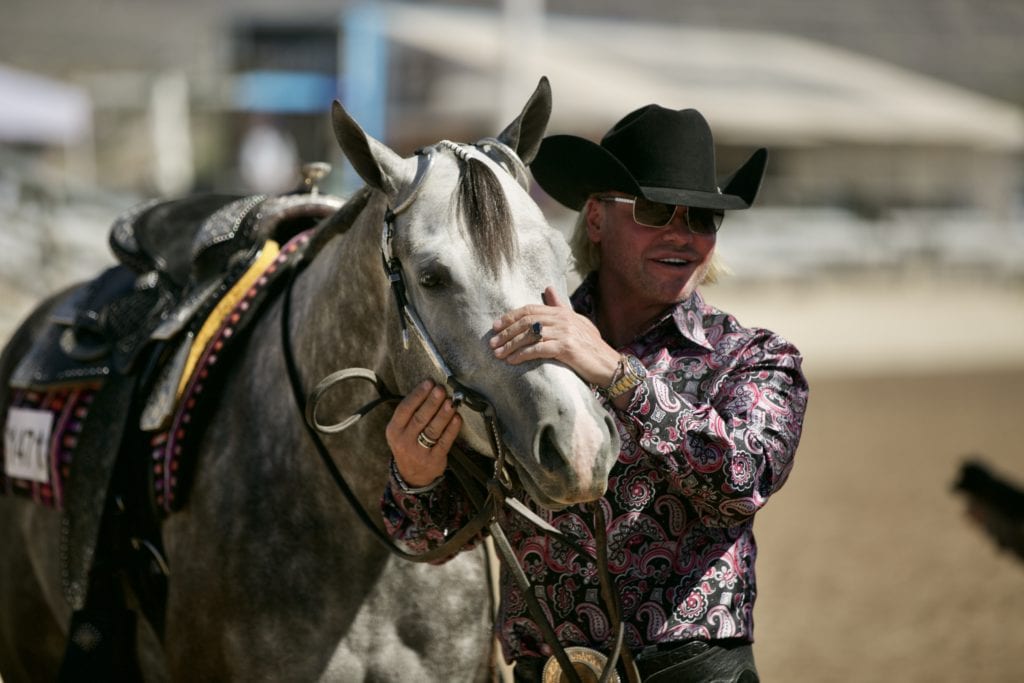
Now, crowns average about five ¾ in. tall (before shaping) with a 4 in. brim. While the old, scoopy look seems to be returning in Western hats, Shorty doesn’t see the square-front, clean-lined shape going away any time soon for breed shows.
Currently, the most desired shape of the Western All-Around hat crown still has a traditional “Cattleman’s Crease.” The brims now are not as high and tight around the crown as they used to be in the past couple of years (Shorty calls this the “taco” fold). Today’s trends still have a square front; however, the crease isn’t as severe, and it relaxes as it moves toward the back of the hat to allow for a more rounded look from behind.
According to Hettinger, there are many customizations available for show hats. She’s found that a whole, clean look without customizations continues to be popular for Horsemanship and Showmanship classes.
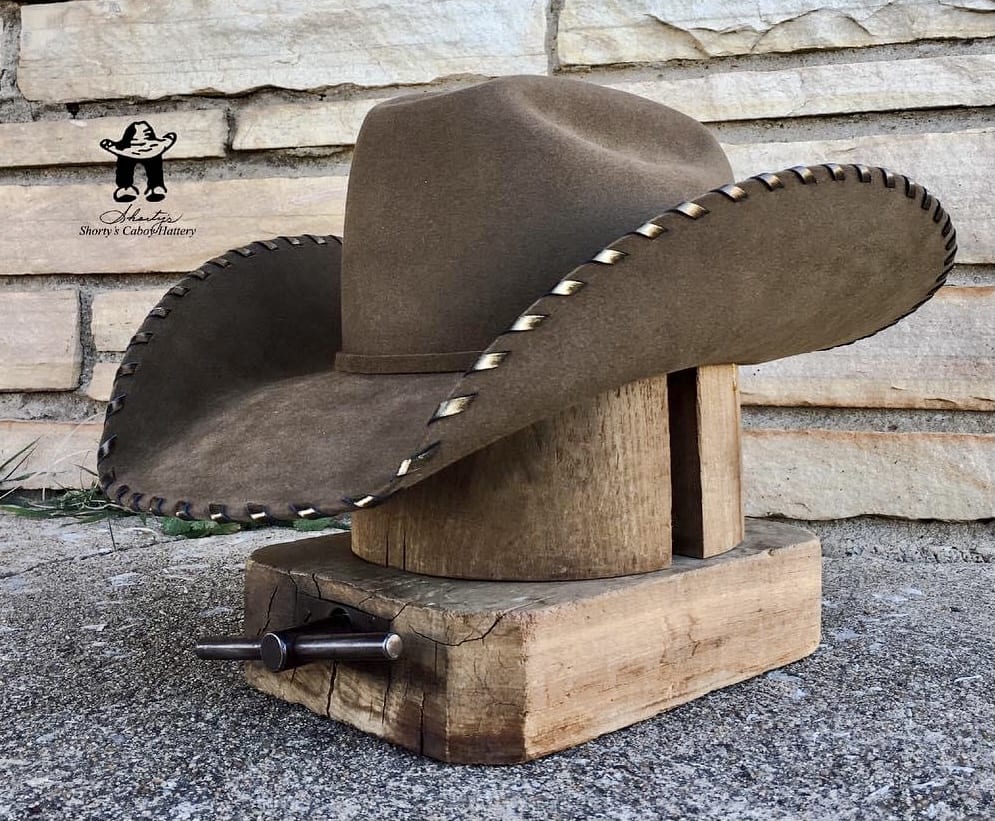
However, Western Pleasure is open to more variety in hat customizations. The most popular option for Pleasure hats is adding special binding or borders to the hat. While crystals on the edges are becoming less popular, whip lace embellishments have remained on trend for many years running.
When purchasing a hat for Western All-Around events, Hettinger encourages people to look at the purchase as an investment. Specifically, Shorty’s offers three different options for custom hat felt material – a 20x hat (20% beaver pelt blended with 80% rex rabbit hair), a 50x hat (50% beaver and 50% rex rabbit), and a 100x hat (this is a 100% beaver pelt hat). The 20x custom hat begins at around $600, with the 50x hat costing right about $800.

These prices may initially seem high, but this includes maintenance and reshaping the hat at major shows (as long as you get it reshaped by the maker brand and the hat does not require total refurbishment). Additionally, Hettinger says that the higher the beaver pelt percentage, the softer, more “velvety” the hat is, and the more likely it is to hold its shape.
Given the investment in a hat, Hettinger reminds us that proper hat care is critical to increasing its longevity. She says, “When you’re done wearing your hat, put it on its crown and let it naturally air out before putting it in the hat can. If it rains, let it dry naturally before storing it. Otherwise, it will lose shape, possibly grow mold, and require major refurbishment.”

Hettinger reminds those shopping for a new hat, “Know what you like. Know what you want to invest in. Know what fits you. And know how to take care of your hat.” She recommends exhibitors try on multiple hats with different shapes to see what works best for their faces while staying within the general boundaries of trending crown and brim sizes.
As John Wayne used to remind people, a real cowboy needs the right attitude and the right hat. When it comes to showing horses, it seems the adage is still applicable. So, stand out from the crown and bring your “hattitude” next time you enter the ring.


